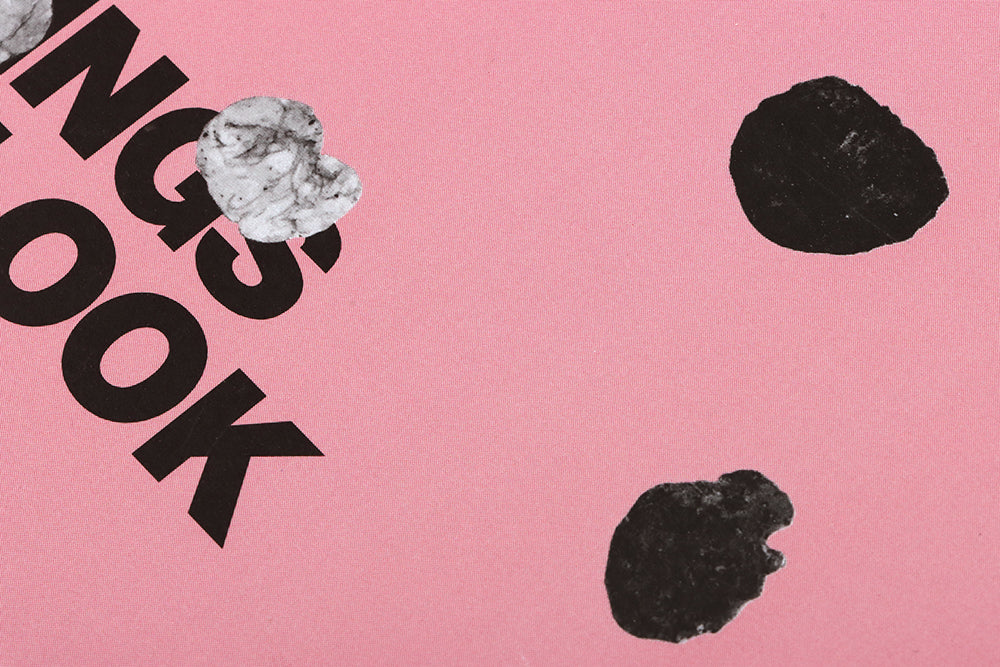
The City is Ours #1
This incredibly niche title may have won the ‘It’s this one (very specific) thing’ crown. The first in a series of six issues encouraging street-level curiosity, Finnish publication The City Is Ours is nicher-than-niche and oddly, wonderfully alluring

‘Anything becomes interesting if you look at it long enough,’ reads a quote by French novelist Gustave Flaubert on the otherwise empty, matte-pink back cover. Pushing that notion to what you’d be forgiven for thinking are its very limits, this first issue, subtitled ‘Things to look for along the way’ is all about ‘Discarded Gums’. Mhm. That’s chewed-up-and-unceremoniously-spat-out gum or “chut/chuddy” as chewing gum is inexplicably referred to where I’m from in the north of England.

With a self-identified ‘scientific-but-ironic approach’, the first edition of The City Is Ours opens, in imitation-gum type, with: ‘We are all used to seeing chewing gum abandoned on the ground. (*Unless you live in Switzerland or Singapore)’ It’s true that blithely expelled hunks of gum are a quasi-permanent fixture on the pavements of cities around the world. It's a blemish that is at once immediately familiar and almost entirely invisible all at the same time.
I mean, think about it. When was the last time you stopped to study a piece of street gum? Never? Probably. And yet, there they are, embedded into the very fabric of our imagined idea of a busy city street along with pigeons, cigarette butts, deep-rooted dandelions and, more recently, face masks. Perhaps our psyches are purposefully semi-blind to such things as we know that what they ultimately represent is our great ability to care very little for the environment in which we live.
Over 74, novel-sized pages, The City Is Ours explores just this phenomena; all the while with tongue (and presumably gum) pressed firmly into cheek. It succinctly and convincingly reveals the otherwise subconscious matter of our surroundings via two main sections: ‘Documentation’ and ‘Interventions/Interpretations’, as well as three shorter, closing segments: ‘Gum Stories’, ‘An invitation’, and finally, ‘Tasks #1’.

In Documentation, ‘like artefacts at a dig site’, we’re presented with photographs of our most sticky subject. These begin with the subtitle ‘location’ including spaces ‘outside restaurants, shops, subway stations’—aka, anywhere we humans gather on tarmac. ‘Many other pieces’, the section continues, ‘as a sign of good intentions, are near bins.’

We then explore ‘dimension’ (the average gum ‘spot’, you’ll be interested to know, is around three centimetres), ‘Blob gum’, aka ‘fresh and just discarded’ (the veritable snow leopard of discarded gum), as well as ‘Tail gum’, ‘Stamp gum’ (a favourite), ‘Black spot’, and ‘Painted’.
Black spot and painted are, poetically, the latter stages of a spot of gum’s life—when it either fades from its original white, pink, or blue to grey and eventually black. If it’s painted over, as when new road markings are applied, it finally becomes one with the built world around it and ‘has now fully become part of the street.’ RIP (Rest In Paint) little one.

Through Interventions/Interpretations, a handful of contributors share their artistic interpretations of these contemporary tribal markings. There’s a series of surprisingly sweet ‘Gum constellations’ created by the artist Milo (below), gum anthropomorphised in ‘Chewing gum with eyes’ by Paul Sutton, and the insect-friendly(?), functional ‘Ant gums’ by Sanne Couprie. From there, a short piece of fiction is followed by the City Is Ours manifesto calling for the reader to take a ‘second look at what is already around us’, after all, ‘the city is ours.’

Toward the end of the issue, Tasks #1 offers the reader a way to get to know the ‘discarded gums’ inhabiting their own streets: ‘Find some stamp gum. Can you recognise what has stepped on it? Can you read any imprint left behind by the stamping?’
It’s at this point that my brain becomes uncontrollably compelled to begin an Instagram account dedicated to that very wild beast. Nonetheless, I resist, recalling the opening words of the the aforementioned manifesto: ‘We don’t need to escape into a digital world’ (which sits on a double-page spread in which Mark Zuckerberg in VR headset juts out smugly from the bottom right corner).
To conclude, this clearly lovingly-designed project reads the city via a hyper-specific lens as a way to show that, yes, it would appear that ‘anything can be more interesting and meaningful than what it seems to be’. Their second issue, it’s worth noting, will explore ‘Graffiti Removals’ aka ‘covered-up paintings, where illegal graffiti has been painted over’, which, of course, is the perfect follow up to the inaugural Discarded Gums.
Though at first-glance a novel or even slapstick creation, The City Is Ours reveals to us just one of the many things we both see and are blind to as we move around this Earth. And that’s the magic of it.
There’s a healthy dollop of irony in these pages, sure, but that just makes it all the more enjoyable. It’s a self-aware publication poking fun at us—the wildly successful but incredibly short-sighted primates strutting around our clamouring city streets, chewing things up, spitting them out, and on and on we go...
Until, of course, the Earth below those same tarmac-covered streets chooses to chew us up and spit us out, and on and on it goes… (With or without us, that remains to be seen).
Concept, design and art direction Lorenzo Servi


